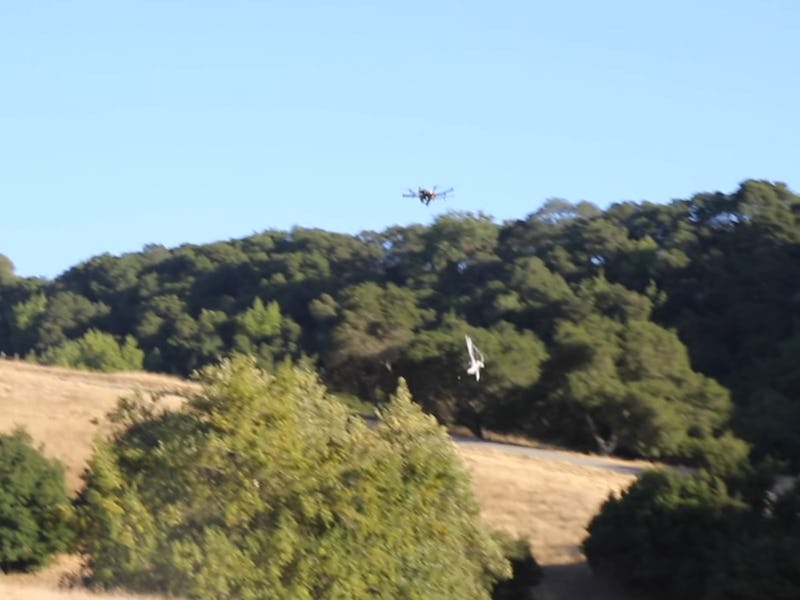AirSpace's New Drone-Predator Can Lock on and Shoot Down Enemies
Like helicopter birds of prey.

Small consumer drones have become an integral part of modern warfare, giving irregular forces like the Islamic State eyes and weapons in the sky, with few ways to detect or destroy them. AirSpace systems thinks it might have an answer: a new, specially-programmed drone capable of locking onto a buzzing enemy aircraft and shooting it out of the sky with a net, before dragging it safely away from friendly lines.
While the military has poured money into swarm-killing microwaves, drones laden with explosives or chemical weapons could still cause harm if shot down near friendly forces.
“When we started on this we thought for sure the military would have something secret in Area 51 that could take out drones,” AirSpace CEO Jaz Banga told Inverse. But Banga says the military’s advanced research projects and funding proposals were mostly for special projectiles and jamming guns, but nothing that could disable a threat without bringing it out of the air.
“That’s when we realized, ‘Wow, OK, they really don’t have a solution.’”
Modern commercial drones combine small bodies with high carrying capacity — enough to transport small explosives or chemical munitions. “When we saw how much these drones could carry with some very inexpensive motors,” Banga says, “we started thinking, these are going to be a problem.” If a drone is hovering over a military unit, or a group of civilians, current solutions include shooting it down and jamming its connection to its remote controller, both of which could bring the drone down on friendly forces.
And as machine vision algorithms improve, drones could be programmed to complete a kamikaze mission even if their connection to an operator is disrupted.
Fortunately, machine vision is a double edged sword. AirSpace’s drone security system uses its own machine vision system to spot, chase down, and net-gun enemy drones. This net can then be used to carry the target drone away, or back to a separate base to be studied — but just as likely, these little homing drones will end up being suicidal by their very nature. “It’s capable of sacrificing itself, no problem,” Banga confirmed, but it also has an automatic “Kevlar parachute” which can deploy in an attempt to contain any explosion that does occur.
The drone even incorporates some mid-air forensics, using an array of sensors broadly similar to those used to detect bombs and other dangerous substances at airports, which could help it to figure out which of its abilities to actually use on a given drone, once that drone has been captured, or even before.
“If you look at some of the crashes and terrorist [drone] captures that have happened,” Banga said, “we’re learning that the bad guys are starting to use the most most advanced technologies out there.”
The only solution is to keep developing newly advanced technologies faster than the other side. DARPA is famously aggressive in its quest to keep America ahead of the curve, but when even rogue groups of terrorists are starting to use advanced coding strategies, there’s no such thing as too much help.